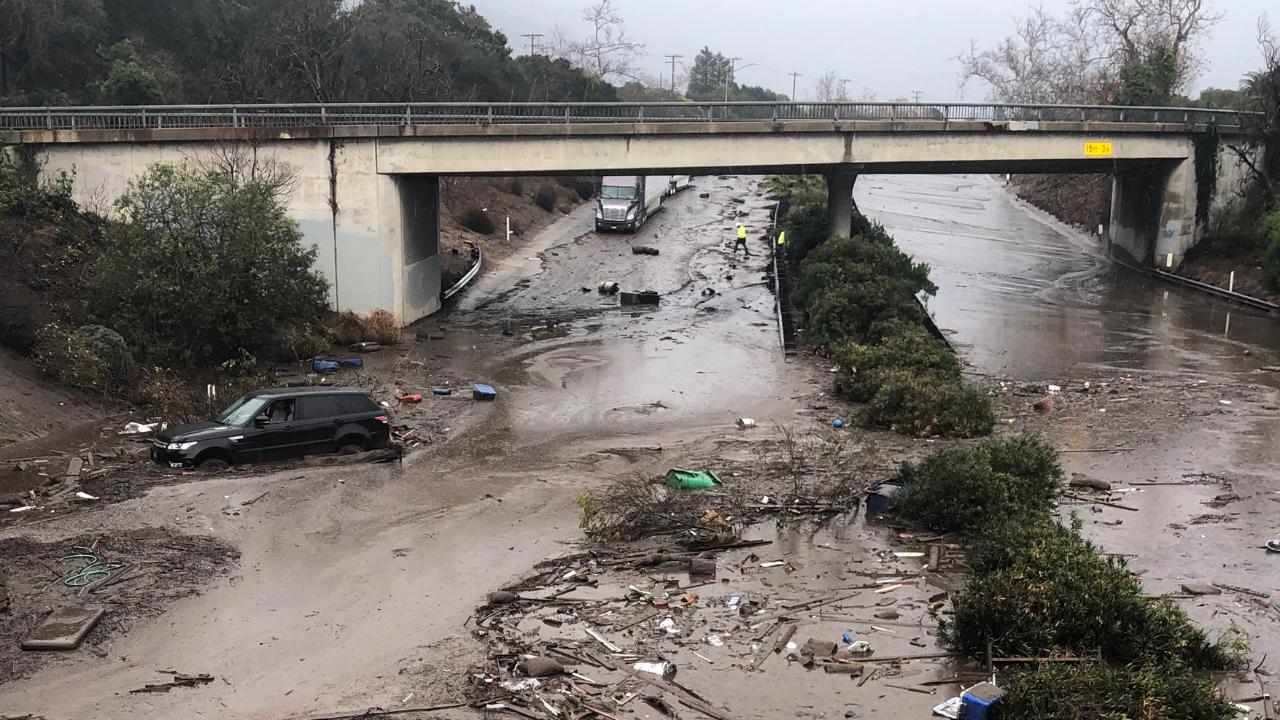Heavy rains are in the forecast. Los Angeles and Ventura country residents, fresh from the devastation that was the Woolsey fire, are now faced with the possibility for mudslides, rockslides, and debris flowing down from the burn area’s fire-scarred slopes. Downed power lines and water main breaks are possible. As are ripped up trees crashing into homes and vehicles. Water, power, and natural gas outages or scarce availabilty are possible. As is traffic congestion if people flee onto possible impassable roads with non-functional traffic signals.
As for the property damage, it could be excessive. However, there are a few things property owners can do to minimize damage. Here are some tips to keep your house and your family safe from a landslide.
Heavy rains are in the forecast. Los Angeles and Ventura country residents, fresh from the devastation that was the Woolsey fire, are now faced with the possibility for mudslides, rockslides, and debris flowing down from the burn area’s fire-scarred slopes. Downed power lines and water main breaks are possible. As are ripped up trees crashing into homes and vehicles. Water, power, and natural gas outages or scarce availabilty are possible. As is traffic congestion if people flee onto possible impassable roads with non-functional traffic signals.
As for the property damage, it could be excessive. However, there are a few things property owners can do to minimize damage. Here are some tips to keep your house and your family safe from a landslide.
Know Your Home’s Risks
Your home’s location should give you some indication if you’re in danger. Landslides are more likely if you’re in an area where vegetation has been destroyed by wildfires or human intervention.
Is your house on a cliff face? Does your house sit at the bottom of a steep ominous looking slope? Are there nearby streams, rivers, or runoff? What’s your home’s proximity to natural drainage areas or erosion valleys? Is there a history of landslides?
It’s important to familiarize yourself with the land to better understand your risks in different scenarios. You should especially stay cognizant of stormwater drainage patterns on slopes near your house – especially wherever runoff water converges.
If imminent danger is suspected, inform neighbors if possible, contact your public works, fire, or police departments, and evacuate immediately. Warning signs can be anything from unusual sounds (indicative of moving debris like boulders knocking together and trees cracking) to increased or decreased water flow in nearby streams to collapsed pavement, mud fallen rocks, and other signs of debris flow.
Prepare an Emergency Kit
It’s important for Southern Californian homes and businesses to have emergency kits ready and accessible at a moment’s notice. A basic emergency supply kit should include one gallon of water per person for at least three days. This is for both drinking and sanitation. There should also be at least three day’s worth of non-perishable food as well as First-Aid supplies. Additional items may include anything from clothing and prescription medications and glasses to baby formula and diapers, extra pet food and water, mobile phones and chargers, books, and personal hygiene items.
Have a Family Emergency Plan in Place
Look into local emergency response and evacuation plans. Have conversations with your family about what to do in the event of a landslide. Create an emergency action plan that is practiced with them.
Build Channels or Deflection Walls
Building channels or deflection walls can redirect a mudflow around your building. A retaining wall is more than just a decorative stacked stone and rock barrier separating properties. This structure is actually designed to restrain soil from shifting between two elevations. Retaining walls are commonly built to protect a structure sitting at the bottom of a steep slope. They are effective against landslides. The right kind of retaining wall for your property depends on characteristics like soil type, slope angles, and groundwater. Gravity walls, Piling walls, Cantilever walls, and Anchored walls are some different types of retaining walls.
Planting ground cover on a slope can also help hold soil together. This can be anything from planting grass and shrubs to using mulch, mulch matting, and rocks.
Just be aware that you can be held liable for a neighbor’s property damage if anything you plant or build diverts the flow of debris from your house to theirs.
REBUILDING AFTER A LANDSLIDE? LET’S TALK
If your home has been damaged by a mudslide, the crew at H.W. Holmes, Inc. is available to help you rebuild after a mudslide in Los Angeles or Ventura counties. Contact us today at (805) 383-9929.

